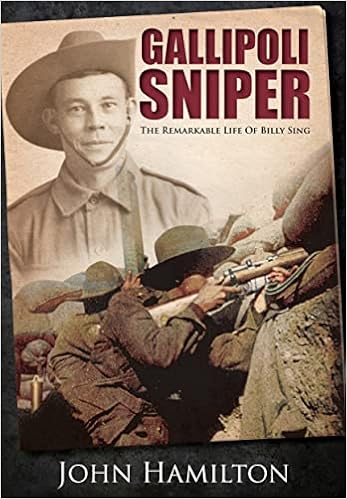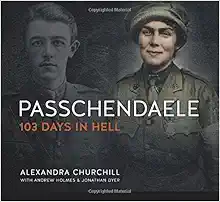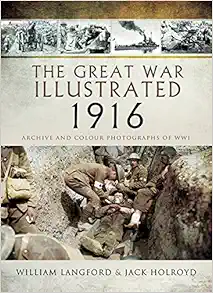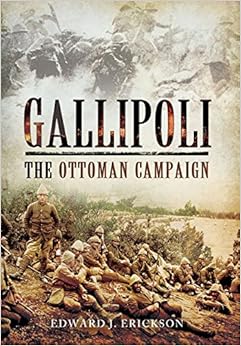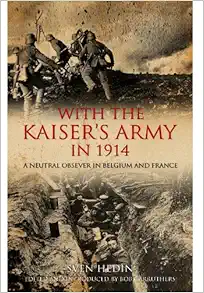Tragedy on the Somme
By Del Kostka
The River Somme meanders through the picturesque French region of Picardy. Flowing past gently rolling hills and green country meadows, the river’s natural beauty belies a tragedy and horror that unfolded along its banks in the summer of 1916 when two great armies fought to the brink of annihilation over a landscape that neither considered strategically significant. Indeed, few places on earth have come to symbolize useless bloodshed and the futility of war more than the Somme.
Prelude to Tragedy
The story of the Somme really begins in August of 1914 during the opening days of the First World War. Great Britain entered the war with an extremely small but highly efficient professional army of 250,000 troops.[1] The army’s main role since the end of the Boer War was simply to police the British territorial empire, while Britain’s national security was vested in its large and powerful Royal Navy. Realizing the disparity in numbers between Britain’s land army and the massive, conscript-fueled German and French armies now squaring off on the continent, British Secretary of State for War Lord Kitchener issued an immediate call for volunteers to raise an additional 100,000 troops.[2]
All across Britain, local politicians and leading citizens rushed to establish recruiting drives to fulfill Kitchener’s call to arms. In the city of Liverpool, the Honorable Edward Stanley, 17th Earl of Derby and a war hero in his own right from his service during the Boer War, led a recruitment drive based on camaraderie and civic pride. Acting on a suggestion put forth by his friend General Sir Henry Rawlinson, Lord Derby offered recruits the option of joining a battalion comprised entirely of their friends, co-workers and neighbors from the immediate Liverpool area. The idea was an immediate success. Derby enlisted over 1500 men on his very first day of recruitment using this “Battalion of Pals” inducement.[3]
When Lord Kitchener heard about Derby's success in Liverpool he replicated the Pals campaign in towns and villages all over Britain. By the end of August over 30,000 men were enlisting in Pal’s Battalions every single day. By mid-September over 500,000 new Tommies had joined the army, most drawn to the promise of training and fighting alongside their brothers, cousins, friends and colleagues.[4] But the astounding success of the Pal’s Battalion recruitment drive hid an ominous and heart-breaking reality that few foresaw in the early months of the war. This oversight would become tragically apparent on the first day of July, 1916.
Strategic Setting

|
Verdun sits astride the Meuse River in north-eastern France. Widely regarded as the eastern gateway to Paris, Verdun was surrounded by a series of hardened, underground fortifications built by the French after their disastrous defeat at the hands of the Germans in the Franco-Prussian War. Now, with Paris once again threatened by an invading German army, mighty Verdun was seen by the French as a symbol of national strength and pride. The symbolic importance of Verdun was not lost on General Erich von Falkenhayn, Chief of the German General Staff. Falkenhayn surmised that a concentrated offensive and siege of Verdun would draw the French army into a sustained battle of attrition that would exhaust French forces and open a clear path to Paris.[5] On February 21, 1916, over 1200 German siege guns began a relentless shelling of Verdun and its surrounding fortifications. Following the bombardment, Falkenhayn poured over 140,000 German troops into a narrow French defensive front barely eight miles in width.[6]
Staggered by the weight of the German attack, France threw every soldier available into the Verdun inferno. For four tortuous months the French gamely repulsed the German onslaught, but eventually the exhaustion envisioned by Falkenhayn began to take its toll. By early June the French army stood on the brink of collapse. In desperation, French Commander in Chief Marshal Joseph Joffre reached out to Douglass Haig for a lifeline. Earlier that year Joffre and Haig had agreed to conduct a joint British and French offensive along a section of the Somme river valley about 125 miles to the north of Verdun. The intent of the joint offensive was to open a gap in the German defensive front at a point where the British and French trench lines met. The Somme offensive was initially scheduled for late August in order to give the new British army adequate time to train and organize, but now Joffre argued for an immediate attack to divert Falkenhayn’s forces away from Verdun and relieve the pressure on the besieged French army.[7] There was just one caveat; the atrophy suffered by the French at Verdun meant that Britain’s untested new army would now have to bear the brunt of the Somme offensive.
Haig reluctantly agreed. He knew the British Commonwealth forces would have a significant numerical advantage over the Germans at the Somme due to the German’s ongoing Verdun offensive, and he believed he had a battle plan that could overwhelm any token resistance the Germans would offer. The attack would be proceeded by the heaviest artillery bombardment that had ever been seen. Over a period of eight full days, 1400 British guns would unleash over 1.6 million shells on the German front lines.[8] The British also dug a series of dynamite-packed tunnels under the German trenches. Once detonated, the dynamite would blow enormous gaps in the German lines. The artillery barrage and mine explosions would destroy the German trenches and eliminate any barbed wire barriers. At the conclusion of the barrage, over 110,000 troops from across the British Commonwealth would go over the top along the length of their 17 mile front to seize and occupy the ravaged German lines.[9] To the south, a downsized contingent of 5 French divisions would simultaneously attack along an 8 mile front.[10]
On June 24, the preliminary artillery bombardment began. To the British troops waiting within their trenches, the intense and incessant barrage inspired good cheer and confidence.[11] In fact, so confident were British commanders in the effectiveness of the barrage that they issued strict orders for the advancing infantry to walk in tight formation across the bombed-out terrain in order to maintain discipline and control.[12] The inexperienced Tommies were also ordered to carry along any kit they may need once they occupied the German trenches. The assorted bed rolls, cutlery, shovels and ammunition amounted to an additional 70 pounds of gear per man.[13]

|
Catastrophe!
The British artillery barrage had been an abject failure. The spectacular eight-day pyrotechnic display that inspired such confidence in fledgling troops and commanders alike did little more than churn the already scarred landscape. The problem lied in the composition of the British artillery corps, which was heavily biased towards lightweight and maneuverable field guns rather than heavy howitzers. Their smaller airburst shells were designed to throw shrapnel down on an adversary, but they did little to cut barbed wire or harm sheltered personnel.[15] Moreover, British planners had grossly underestimated the strength of the German defensive system. The Germans had excavated deep, concrete reinforced dugouts beneath their trenches to shelter both personnel and weapons. When the barrage ended, they quickly moved back onto the parapets and reestablished their pre-sighted machine gun positions.[16] When the British troops emerged from their trenches and began walking across No Man's Land, the Germans were waiting for them.
It was a true catastrophe. As the British soldiers walked steadily toward the German lines, machine-gun fire swept across the open fields. Those who made it across the mud and shell craters of No Man's Land were stopped cold and entangled by a labyrinth of intact barbed wire, allowing the German gunners to mow them down with ease. So great was the carnage at one point along the front that some German riflemen actually set down their weapons, unwilling to continue the relentless, one-sided killing.[17] Some of the advancing Tommies did manage to reach and seize select points along the German trench line, but their numbers were too small to hold any gain. By the time the troops were pulled back later that evening, the British Army had suffered 58,000 casualties including over 19,000 killed in action.[18] July 1, 1916 was, and still remains, the single worst day in all of British military history.

|
unneeded equipment.[19] As a result, the smaller French force at the Somme captured several of their first day objectives and also suffered far fewer casualties.
The Battle of the Somme did not end on July 1. In fact, it would drag on for another five grueling months, during which time the British and French mounted no less than 11 distinct offensive operations against the German lines.[20] However, the July 1 calamity had left an indelible impression on British leadership. Never again would the British launch a large-scale assault against the entirety of the German front. The protracted Battle of the Somme was characterized by smaller attacks against isolated segments of the German lines. Very little territory was gained through these assaults, but the relentless pressure compelled the Germans to divert resources away from Verdun to strengthen their Somme defenses.[21] The diversion allowed the French to regroup at Verdun and hold the fortress city. Ironically, despite the horrifying casualties and dizzying misjudgments of July 1, the Somme offensive ultimately achieved its rather limited strategic goal.
Aftermath
Despite the dubious success of the long Somme campaign, the battle had dire political and social consequences in Britain. Initial press reports were censored and written to exaggerate German losses, but the truth could not be hidden.[22] All across England, close-knit neighborhoods and villages were devastated as the casualty lists were posted. Some villages struggled to understand how every native son who marched off to war could be lost on the same day, but it was only the logical outcome of a Pal Battalion that went over the top at the Somme on July 1, 1916. The initial accounts of success coupled with the growing casualty list only served to breed confusion and anger. As the scale of the catastrophe became apparent, an epidemic of grief swept across the country.
The seemingly pointless slaughter on the Somme also led to changes within the British military. The British Army promptly stopped promoting volunteer "Pal's Battalions" and instead instituted a system of conscription to replace the fallen. [23] New tactics in trench warfare were also developed to include giving unit commanders more authority to exercise personal initiative during an assault, and creeping artillery barrages to provide cover for advancing troops. But the biggest change may have been in the Tommies themselves. The new citizen army that suffered such a horrific baptism of fire on July 1, emerged from the Somme a savvy, battle-hardened fighting force who understood the tactics and realities of modern warfare.
It is very difficult for us to rationalize the Somme today. Five months of relentless assault on German lines produced no significant breakthrough, and the territorial gain for Entente forces amounted to strip of land barely 11 miles wide by 7 miles deep.[24] The cost in human lives was staggering. The protracted Battle of the Somme cost the British Commonwealth nations almost 420,000 casualties. France lost an additional 204,000. Germany’s penance for doggedly defending an inconsequential patch of French farmland was around 450,000 casualties.[25] Even today, one hundred years after the sounds of battle faded from the beautiful French countryside, the Somme is still remembered by many as the one battle that most embodies the tragedy of war.

|
Today, visitors to the Somme will find a variety of private and public museums, well-preserved battlefields, monuments and beautifully maintained cemeteries. Although the Picardy region is not known as a tourist venue, the area is visitor friendly and easily accessible by high-speed rail from London, Paris or Brussels via Lille, France. From Lille, France’s incredible regional rail system serves the towns of Amiens and Arras. Either serve as a convenient gateway to the Somme region.
For those wishing to visit the Somme independently, there are a number of self-guided tour and map packages available via the internet. Both Amiens and Arras offer a variety of car rental options, and the quiet secondary road network that connects key battle sites is ideal for drivers and cyclists alike. Restaurants and accommodations ranging from rustic to plush can be found in villages and towns throughout the region.

|
| * * * |
Show Notes
| * * * |
© 2026 Del Kostka
Written by Del C. Kostka.
About the author:
Del C. Kostka is a staff officer at the National Geospatial Intelligence Agency in St. Louis, Missouri. He has a Masters Degree in Operational Arts and Military Science from the US Air Force Air Command and Staff College.
* Views expressed by contributors are their own and do not necessarily represent those of MilitaryHistoryOnline.com.

